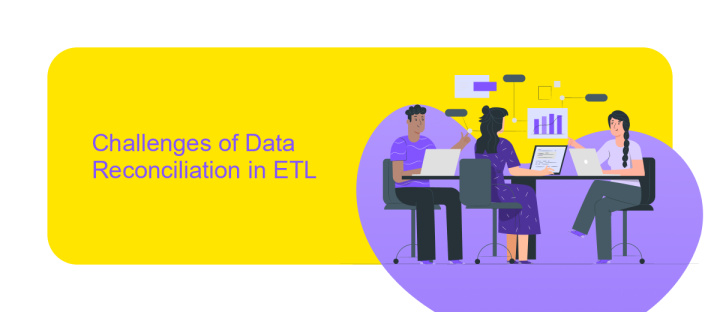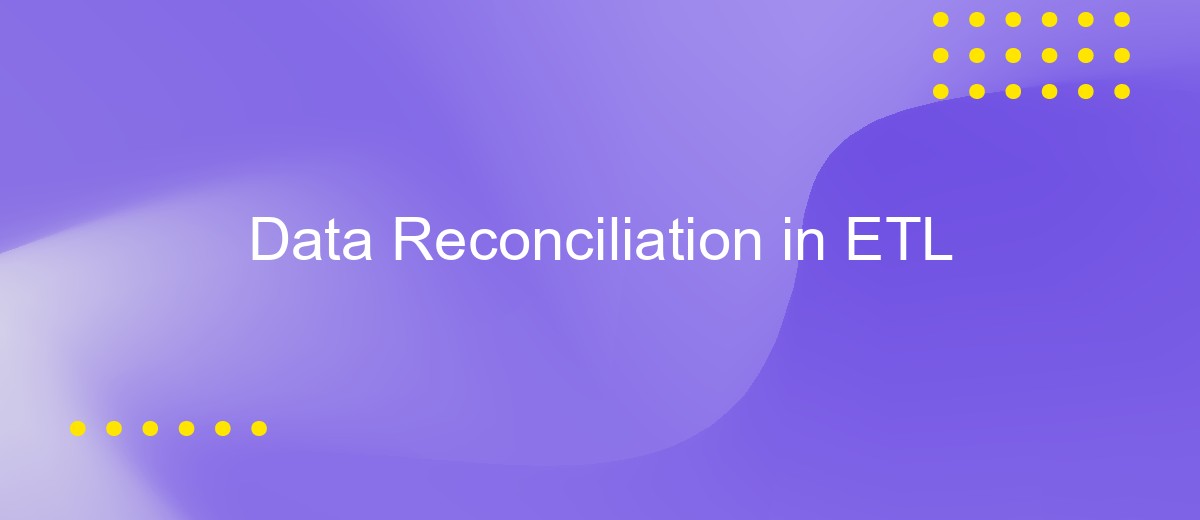Data Reconciliation in ETL
Data reconciliation in ETL (Extract, Transform, Load) processes is crucial for ensuring data accuracy and consistency across various systems. It involves comparing and validating data from source and target databases to identify and rectify discrepancies. Effective data reconciliation enhances data quality, supports decision-making, and maintains the integrity of business intelligence operations, making it a vital component in any data management strategy.
Introduction to Data Reconciliation in ETL
Data reconciliation in ETL (Extract, Transform, Load) processes is a critical step to ensure data accuracy and consistency across various sources and destinations. It involves comparing data from different systems to identify and rectify any discrepancies, thereby maintaining data integrity throughout the ETL pipeline.
- Identify data discrepancies between source and destination systems.
- Validate data transformations to ensure correctness.
- Ensure data consistency across different stages of the ETL process.
- Automate reconciliation processes to minimize manual intervention.
Effective data reconciliation can be facilitated by using integration services like ApiX-Drive, which streamline the process of connecting various data sources and automating data flow. By leveraging such tools, organizations can reduce the complexity of data reconciliation, improve accuracy, and ensure timely data availability for decision-making.
Challenges of Data Reconciliation in ETL

One of the primary challenges of data reconciliation in ETL processes is ensuring data accuracy and consistency. When data is extracted from multiple sources, discrepancies and inconsistencies can arise due to variations in data formats, missing values, or outdated information. These issues can lead to inaccurate reporting and analysis, making it crucial to implement robust validation and cleansing mechanisms. Additionally, the complexity of managing large volumes of data from diverse sources can further complicate the reconciliation process, requiring sophisticated tools and techniques to maintain data integrity.
Another significant challenge is the integration of various data sources and systems. Different platforms may have unique data structures and protocols, making seamless data integration a daunting task. Utilizing services like ApiX-Drive can help streamline this process by automating data transfers and synchronizations between disparate systems. However, even with such tools, continuous monitoring and adjustment are necessary to handle changes in data sources or business requirements. This ongoing effort to maintain synchronization and alignment across systems is essential for effective data reconciliation in ETL pipelines.
Techniques for Data Reconciliation in ETL

Data reconciliation in ETL processes ensures data consistency and accuracy across different systems. It involves comparing data from different sources and making necessary adjustments to align them. Various techniques can be employed to achieve effective data reconciliation.
- Data Validation: This involves checking the data for accuracy and completeness before it is loaded into the target system. Validation rules can be applied to identify and correct errors.
- Data Matching: This technique involves comparing records from different sources to find matches and discrepancies. Algorithms like fuzzy matching can be used to identify similar but not identical records.
- Data Aggregation: Combining data from various sources and summarizing it helps in identifying inconsistencies. Aggregated data can be compared to ensure all sources contribute correctly.
- Automated Tools: Tools like ApiX-Drive can facilitate data reconciliation by automating the integration and comparison of data from different systems, ensuring seamless data flow and accuracy.
Implementing these techniques helps maintain data integrity in ETL processes, ensuring that the data is reliable and accurate for decision-making. Regular reconciliation checks can prevent data discrepancies and enhance overall data quality.
Best Practices for Data Reconciliation in ETL

Data reconciliation in ETL processes is crucial for ensuring data accuracy and consistency across various systems. To achieve effective data reconciliation, it's essential to implement best practices that address both the technical and procedural aspects of ETL.
First, establish clear data quality rules and validation checks to identify discrepancies early. These rules should cover data completeness, accuracy, and integrity. Automated tools can help monitor and enforce these rules throughout the ETL process.
- Implement robust logging and error-handling mechanisms to track reconciliation issues.
- Regularly audit and review data reconciliation processes to identify areas for improvement.
- Utilize data integration services like ApiX-Drive to streamline data flows and ensure seamless synchronization between systems.
- Maintain comprehensive documentation of reconciliation procedures and any anomalies detected.
By following these best practices, organizations can enhance the reliability of their ETL processes and ensure that data remains consistent and trustworthy across all platforms. Leveraging tools like ApiX-Drive can further simplify integration and reconciliation tasks, making it easier to maintain high data quality standards.
- Automate the work of an online store or landing
- Empower through integration
- Don't spend money on programmers and integrators
- Save time by automating routine tasks
Conclusion: Importance and Future of Data Reconciliation in ETL
Data reconciliation in ETL processes is crucial for ensuring the accuracy, consistency, and reliability of data across various systems. By identifying and resolving discrepancies, organizations can maintain data integrity, which is essential for making informed business decisions. Tools and platforms like ApiX-Drive facilitate seamless integration and reconciliation of data from multiple sources, enhancing the efficiency and effectiveness of ETL workflows.
Looking ahead, the future of data reconciliation in ETL will likely be shaped by advancements in automation, machine learning, and artificial intelligence. These technologies promise to further streamline the reconciliation process, reducing manual intervention and increasing accuracy. As data volumes continue to grow, the importance of robust reconciliation mechanisms will only intensify, making it a critical component of any data management strategy.
FAQ
What is data reconciliation in ETL?
Why is data reconciliation important in ETL processes?
What are common challenges in data reconciliation?
How can data reconciliation be automated in ETL processes?
What steps are involved in the data reconciliation process?
Time is the most valuable resource for business today. Almost half of it is wasted on routine tasks. Your employees are constantly forced to perform monotonous tasks that are difficult to classify as important and specialized. You can leave everything as it is by hiring additional employees, or you can automate most of the business processes using the ApiX-Drive online connector to get rid of unnecessary time and money expenses once and for all. The choice is yours!


